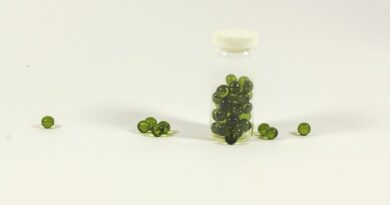Curious Kids: how does our heart beat?
Adam Taylor, Lancaster University
This is an article from Curious Kids, a series for children of all ages. The Conversation is asking young people to send in questions they’d like an expert to answer. All questions are welcome: find out how to enter at the bottom.
How does our heart beat? – Aarav, age nine, Mumbai, India
Aarav – that’s an excellent question and one that matters to every single person on the planet!
The heart is a muscle, and all the muscles in the body work to move things around. Some muscles move our eyes as we read this page, others help us pick things up with our hands. These muscles are “voluntary”, which means you can control them. But other muscles in the body are “involuntary”, which means you can’t control them.
The heart is made of a special involuntary muscle called cardiac muscle, and this muscle is made up of cells called cardiomyocytes (which literally means “heart muscle cells” in Latin). You can’t control the heart muscle or its cells: they respond to the things our body needs, such as oxygen in our leg muscles as we move, or getting rid of our waste carbon dioxide by breathing out.
The heart has a special patch of cells called “pacemaker” cells, which are different to all the other muscles cells of the heart when you look at them with a microscope. These cells set the rhythm that the rest of the heart beats to, and they are located in the wall of the right atrium, which is the top right chamber of the heart.
The cells create an electrical impulse – like a small electric shock – that shoots out through special paths across the heart, to make sure all the other muscle cells contract in a wave pattern, to pump blood out of the heart, to the lungs and around the body.
This wave is caused by movement of tiny molecules that move from inside and outside the cells. These molecules come from the foods we eat and are used to keep us functioning, which is why it’s important to eat enough fruit and vegetables, and foods containing calcium.
Some people have problems with their pacemaker cells, so the electrical impulse doesn’t travel all the way through their heart, and their heart doesn’t contract properly. These people can have an operation to put a tiny machine in to control their heart rate – this is called a “pacemaker”, and it takes over from the pacemaker cells.
The heart doesn’t always beat at the same rhythm. Our heart responds to nervous signals sent from the brain, or to chemicals that the body produces in response to things it sees, hears or smells.
If your sibling dressed up in a scary costume to give you a fright, your eyes would see this, and chemical and electrical messages in the brain would send impulses to the heart, to cause it to beat faster. This would deliver more blood and oxygen to the cells of the arms and legs, so you could run away.
And when you are at home on a Saturday night, relaxing and watching your favourite TV show, the opposite thing happens: the heart doesn’t have to work as hard and so it relaxes and returns to its resting speed, with most blood going to the gut rather than the limbs, again caused by chemical and electrical messages.
The heart beats around 60 to 70 times each minute, and when we exercise really hard, it can beat as many as 220 times per minute. Children’s hearts can beat faster than adults’, especially when you’re exercising hard.
If you want to figure out the most beats your heart can do in a minute, the calculation is 220 minus your age – so in your case, 220 minus nine equals 211 beats per minute, when you’re exercising as hard as possible. For someone of my age, it’s around 190 beats per minute.
To feel how hard your heart works, try clenching and relaxing your fist 60 times in a minute. Hard work, right? And remember, your heart beats 60 times per minute, 60 minutes an hour, 24 hours a day and 365 days per year. That’s 31,536,000 beats every year – if all we did was just sit still! Luckily, your heart does get to have a little rest, in between every beat.
Hello, curious kids! Have you got a question you’d like an expert to answer? Ask an adult to send your question to us. You can:
* Email your question to curiouskids@theconversation.com
* Tell us on Twitter by tagging @ConversationUK with the hashtag #curiouskids, or
* Message us on Facebook.
Please tell us your name, age and which town or city you live in. You can send an audio recording of your question too, if you want. Send as many questions as you like! We won’t be able to answer every question, but we will do our best.
More Curious Kids articles, written by academic experts:
- How do birds see where they’re going? – Thomas and Luke, age six, Sussex, UK
- What sea creature can attack and win over a blue whale? – Drake, age seven, Sydney, Australia
- Do butterflies remember being caterpillars? – Evan, age 5, Bristol, UK

Adam Taylor, Director of the Clinical Anatomy Learning Centre and Senior Lecturer, Lancaster University
This article was originally published on The Conversation. Read the original article.



